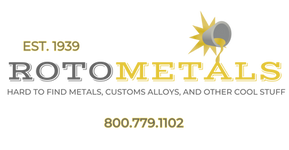The New GOLD?! Germanium: The Strategic Rare Earth Metal Shaping the Future of Technology
Germanium is a rare metalloid that has quietly risen from scientific curiosity to strategic necessity. With the symbol Ge and atomic number 32, it sits just below silicon on the periodic table, sharing many of its semiconductor traits but offering unique advantages. Hard, brittle, and silvery‑gray, germanium has a melting point of 1,726°F (938°C) and resists oxidation, making it durable in demanding environments. Its ability to act as both conductor and insulator depending on conditions has made it indispensable in electronics, while its high refractive index and low optical dispersion have secured its place in infrared optics.
Germanium’s applications span industries that define modern life. In telecommunications, it is the backbone of fiber‑optic cables, enabling the transmission of global internet traffic with clarity and speed. In defense and security, germanium lenses and windows are essential for infrared night‑vision systems, giving militaries and law enforcement critical visibility in darkness. In energy, germanium substrates are used in high‑efficiency solar cells, particularly in satellites where performance must be uncompromising. Even in semiconductors, germanium retains relevance: it was the first material used in transistors before silicon became dominant, and today it continues to play a role in advanced chip architectures.
Yet germanium’s importance is shadowed by scarcity. It is not mined directly but recovered as a by‑product of zinc and coal production, tying its availability to industries with very different priorities. Recycling rates remain low, and reserves are concentrated in only a handful of countries. This fragile supply chain has elevated germanium to the status of a critical mineral, vulnerable to geopolitical shifts. In 2023, China underscored this reality by imposing export restrictions on germanium alongside gallium, citing national security concerns. The move disrupted supply chains, sent prices upward, and reminded industries that access to germanium is far from guaranteed.
This vulnerability has led some analysts to call germanium “the new gold.” The comparison is not about its shine but about its strategic value. Just as gold has long symbolized wealth and power, germanium now represents leverage in the global economy. Its role in fiber optics, semiconductors, renewable energy, and defense technologies makes it a material nations cannot afford to lose. With China controlling the majority of refining capacity, germanium has become a focal point in debates over technological sovereignty and supply chain resilience.
For manufacturers and governments alike, the challenge is clear: demand for germanium will continue to grow, but supply remains uncertain. Strategic planning, diversification of sources, and investment in recycling technologies will be essential to secure this critical mineral for the future. Germanium’s story is not just about chemistry—it is about geopolitics, innovation, and the race to control the materials that shape tomorrow’s technology.
At RotoMetals, we understand the importance of metals like germanium in driving progress. By staying ahead of global supply trends and offering materials engineered for durability and performance, we help customers navigate uncertainty while unlocking new opportunities. To learn more about germanium and other specialty metals, visit www.rotometals.com.
Recent Posts
-
Antimony in Focus: Properties, Applications, and Global Market Shifts
Antimony is a metalloid with a long history and a modern strategic edge. With the symbol Sb and atom …Nov 19th 2025 -
The New GOLD?! Germanium: The Strategic Rare Earth Metal Shaping the Future of Technology
Germanium is a rare metalloid that has quietly risen from scientific curiosity to strategic necessit …Nov 19th 2025 -
Discover Gallium: Powering the Future with the Metal that Melts in Your Hand
Gallium is a scientific curiosity turned strategic cornerstone. With a melting point of about 85.6°F …Nov 19th 2025




